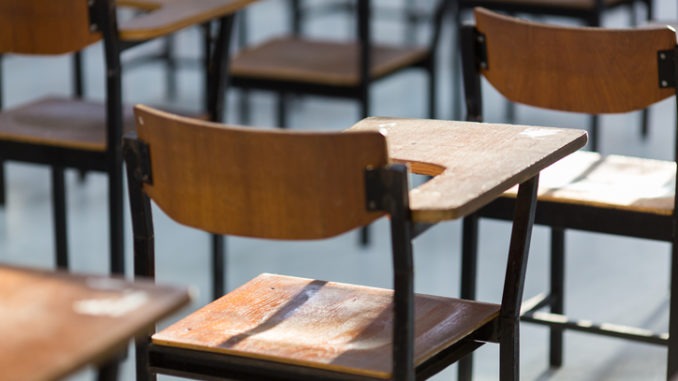
As reported by BBC news, school attendance plummeted after half-term in England, with rates as low as 77% in one region, official data reveals
The Department for Education statistics show how the spread of the coronavirus pandemic around the country has hit education in every region this term.
The West Midlands, Yorkshire and the North East took the biggest hit, before starting to recover in late November. Now, schools in London and the South East are on a downward trajectory.
Attendance in all state secondaries and primaries started off well at the beginning of term, with a rate of about 88%. It rose slightly over the next month, then dipped to about 83% in mid-November, before beginning to climb again.
But secondary schools have fared much worse, with average attendance rates of 80% across England last week. From mid-September until half-term, overall attendance was lowest in the North West, hovering around 85%.
After half-term, it was lowest in the North East, West Midlands and Yorkshire and the Humber, approaching or falling below 80% in mid-November. And in the West Midlands, it dipped to about 77% – the lowest of any region.
Attendance was highest in the South West, South East and East throughout most of the autumn term but has fallen in the South East and East in recent weeks. And in early December, it was lowest in London and the South East, showing how the virus had moved south.
The differing rates, could spark further calls for regional COVID disruption to be taken in to account when pupils face public exams in the summer.
Education secretary Gavin Williamson said he was aware some areas of the country had faced more significant challenges than others and said the new programme of rapid testing would help keep more staff and young people safe.
Commenting on the latest school attendance data, now incorporating local authority breakdowns for the first time, Kevin Courtney, joint general secretary of the National Education Union, said: “These attendance figures that have been hidden from the public for so long show just what a profound impact coronavirus has had on schooling in many areas.
“For example, Hull has had less than 60% attendance in their secondary schools for much of the last half term. Rochdale averaged just 70% attendance in their secondary schools over the whole term.
“Bury, Rotherham and Gateshead had an average of more than 90% of their secondary schools with pupils self-isolating.
“In these circumstances, we cannot see how it is fair on these pupils to sit exams under the same conditions as pupils in York or West Sussex where secondary attendance averaged 90% over the term.”
“The interests of an individual child are of course to be in school, but you have to view this with a wider canvas than that – which Gavin Williamson has been failing to do in his recourse to legal threats. Schools are deeply concerned that community spread is being generated by schools, which are now widely accepted to be major centres of transmission, particularly in secondaries. The most recent ONS data shows that the only other age group seeing a case count other than school-age children, is in the age group which covers most parents (35-49).
“The NEU commends school leaders and councils for taking an ethical stance, in a volatile situation where public health is the prime concern, especially so close to Christmas. It is their standing up for pupils, staff and the community which mattered most in a time of crisis. By contrast, the Secretary of State and his colleagues have failed utterly in their responsibility to keep schools safe.”




Be the first to comment